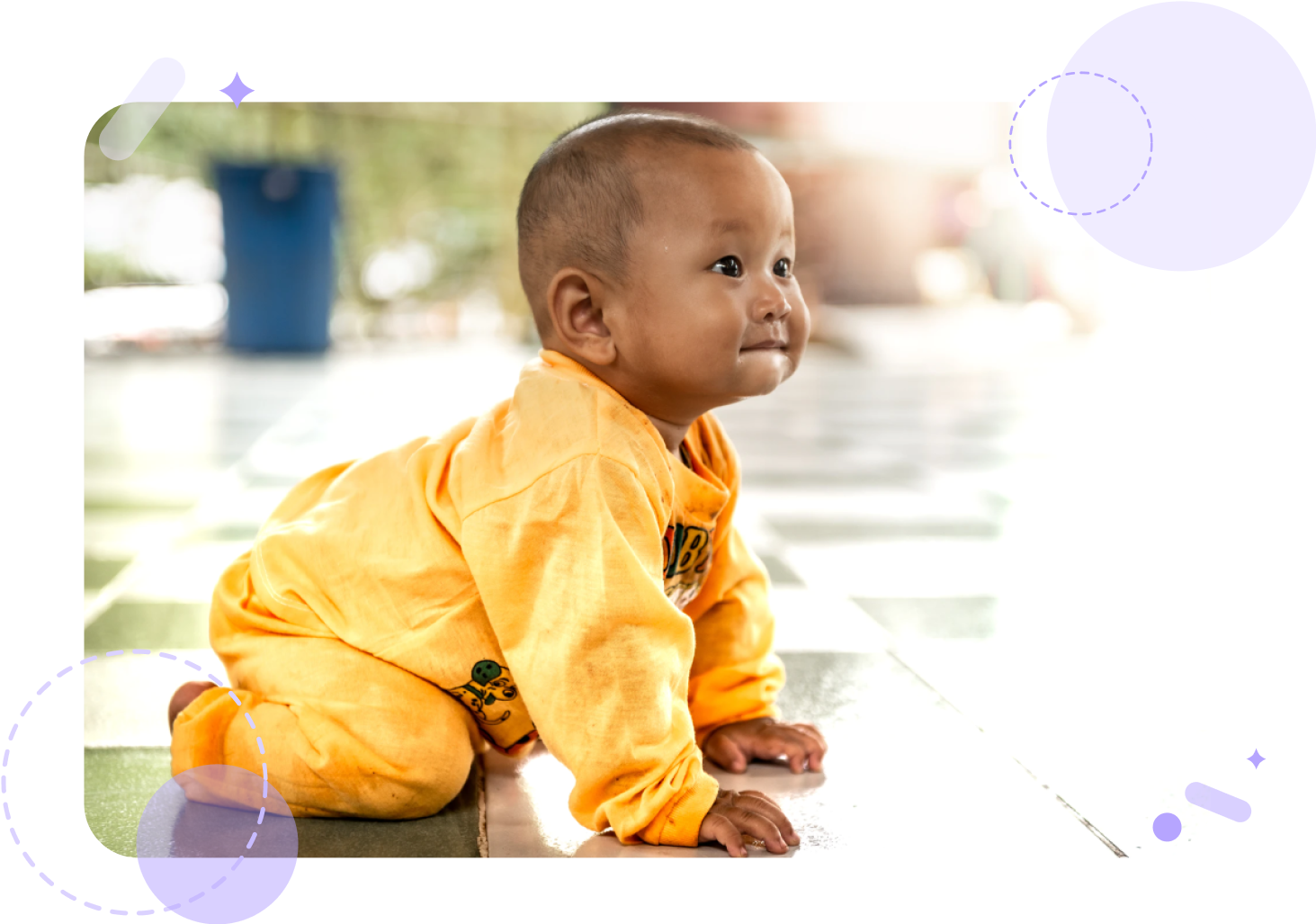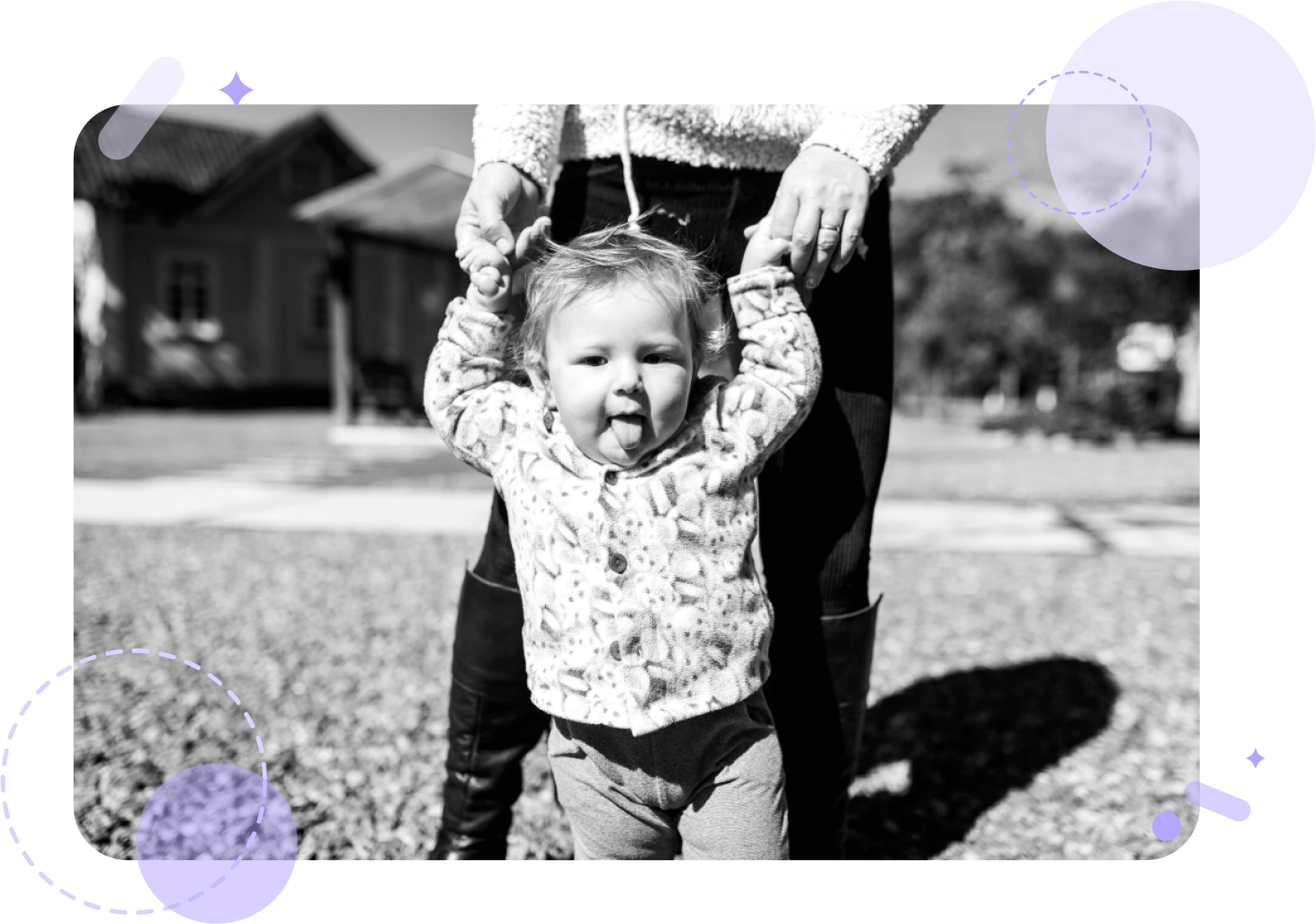
By now, your curious little one is well on their way to tasting the goodness of freedom as they become more independent in their movements. Although they still need your love and support, between the ages of 6 to 9-months, your baby begins the developmental process in the following gross motor skills.
Establishing Good Controlled Movements
Your wobbly bundle of snuggles will now have more control over any bodily movements they unleash during this time. Your little one will make your home their research lab to explore everything they can, stemming from this newfound independence.
Improved head control and strengthening of the neck and upper body muscles help your baby advance into more complex movements like moving from their tummy or back to a seated position. More control over their movements enables them to push themselves up from the stomach to a standing position or on fours with some help from their arms.
Rock and Roll!
The joy of seeing your baby bounce with happiness whenever they are held standing from their trunk area never gets boring. Along with being a treat for eyes, your baby’s ability to bear weight on their legs is great practice for walking.
Rolling requires much more than just bearing weight on the legs. It involves the use of physical strength, muscular coordination, and head control. Don’t worry, while this may seem like a big ask, your baby has been getting ready for this since birth and rolling can be very well seen during this period in the front to back or vice versa direction.
Mastering the Art of Sitting
As a newborn, your baby needed you to support them to sit in an upright position. But now, they can sit independently, without support, for longer periods of time. Not long after this achievement of increased independence, your baby might also be able to lean on all fours and gently rock themselves back and forth. These small back and forth movements also help them to figure out how to use their arms to maintain balance.
Crawling and Cruising
Arm and leg coordination goes a long way in prepping your baby to move themselves during the early stages of crawling, scooting, and rolling before finally walking. This is also when babies discover and understand their feet and repeat the same mouth probing behavior as they did with their hands. Get ready for some feet tasting, which babies use as a sensory tool for exploration.
Now that your baby can sit without support for longer periods, they will use the space around themselves to scoot or crawl using their neck, shoulder, and arm strength to support their body weight. Their ability to navigate comes in handy as moving around definitely requires a great deal of hand-eye coordination.
Soon enough, your baby will be able to pull themselves to a standing position while holding on to an object like furniture before they can fully support their body to start walking independently. This is also known as cruising.
Movers and Shakers
During this age, babies advance from just batting or swiping at toys to banging them. They love to experiment with what happens when they bang objects together, which they can now hold properly in both hands with ease to create sounds and other effects.
Your baby’s curiosity drives them to use their abilities to produce actions when they reach for their favorite toys. Specific effects produced from these toys from interactions will go a long way in helping your little one’s cognitive skills, particularly the comprehension of cause and effect. Get ready to see your baby repeating the same action again and again, like shaking and throwing objects from their hands to experiment with how things work.
Breaking the Fall
Your baby is now more aware of their surroundings than ever before. As a parent, they trust you to look out for them, but babies also look out for themselves with the “Parachute Reflex,” which is a motor response induced when a baby is held high, parallel to the floor, and then brought closer to the floor headfirst. To protect themselves from this sense that they are falling, babies respond by extending their arms forward as if to protect their heads from the oncoming impact.
Your baby will acquire more gross motor skills between the age of 9 to 12-months that equip them with even more mobility. Make sure to support your baby and provide a safe environment to sit, bounce, crawl, and cruise their heart out.
- National Center for Biotechnology Information: The Development of Motor Behavior
- National Center for Biotechnology Information: Learning to Crawl
- National Center for Biotechnology Information: Development Continuity? Crawling, Cruising, and Walking
- National Center for Biotechnology Information: Development of the Forward Parachute Reaction and the Age of Walking in Near Term Infants – A Longitudinal Observational Study
 Back
Back

